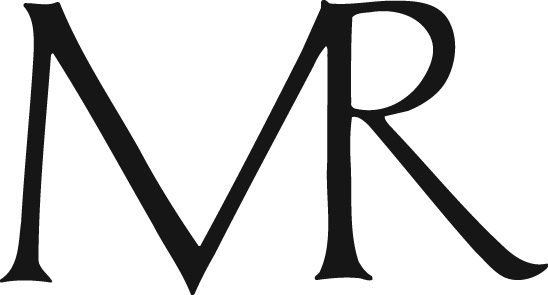“sheltering,” a (hybrid) essay

10 Questions Interview with the Massachusetts Review.
Tiffany Midge is a citizen of the Standing Rock Sioux Nation, and a writer of poetry, journalism, op-eds, and humor. Her work has appeared in McSweeney’s, Okey-Pankey, The Butter, Waxwing, The Offing, World Literature Today and Moss. Her poetry collection The Woman Who Married a Bear won the Kenyon Review’s Earthworks Prize for Indigenous Poetry and a Western Heritage Award. Her memoir is Bury My Heart at Chuck E. Cheese’s. Her collection of subversively comic poems Horns is forthcoming from Spokane’s Scablands Books.
Publications
The Woman Who Married a Bear (University of New Mexico Press)
Bury My Heart at Chuck E. Cheese’s (Bison Books)
Outlaws, Renegades, and Saints: Diary of a Mixed-Up Half Breed (Greenfield Review Press)
Our Interview
Your piece “sheltering” is listed as an “essay”—tell us why you consider this an essay (instead of a poem or another form)? Or is the genre indicated on the magazine inaccurate or incomplete?
TM: I would consider “sheltering” to be a hybrid piece. Or a creative nonfiction piece. Or however one prefers to view it is fine by me. I am interested in hybrid/creative nonfiction because it doesn’t follow rules or strict structures or labels. Its guidelines resemble everything that I admire and appreciate in poetry: economy, lyricism, coyness, a sense of profundity without being explicitly profound. And of course literary-ness. I love writing that allows for the subtlety of suggestion to drive its thesis. And of course, I love that about poetry, also. I enjoy expanding the definitions of nonfiction, or the traditional essay form. And I enjoy experimenting with structure. There are so many different ways to convey narrative, and to tell a story. But the one fundamental principle of essay writing and nonfiction is that it must be ninety-nine percent truth. Maybe I can change the color of the shirt, because light blue, rather than red, better captures a sense of the sea, or of the sky, if I happen to be writing about a seascape. Or the other way around–changing a blue shirt to a red shirt in the midst of a seascape to convey being out of place, standing out. That’s a very mild example of straying from the truth for the sake of story. But there are of course more dramatic examples.
The artistic impulse is undeniably numinous and enigmatic. To believe otherwise would take all the joy out of it.
MR: “Sheltering” weaves several stories, or lines of story, and uses letters (a, b, c, d, e) as part of the form to separate those threads. How did you decide on this form? Is it one you use often?
TM: I have used the form prior in many of my poems, as well as essays. Although, I have not used letters to label or keep track of the different threads before. My intentions for “sheltering” had as much to do aesthetically, the way it looked on the page, as it did with theme or content. And that can be a chore for the page designer. My intentions for “sheltering” also depended upon necessity. I didn’t have a prolonged or extended train of thought written out. Just several impressions and snapshots. Which is true of so much of what I write. And that is probably the poet in me. And the reasoning behind my using the fragmented narratives. If this piece had been workshopped, the feedback would have been to make connections between the disparate impressions. And I wouldn’t contest that feedback. Because even though the reader can suss out an essay’s “meaning,” very often readers are invested in being privy to the author’s “meaning.” To the author’s interiority and connections. Otherwise, we don’t feel satisfied that a piece of writing is finished. It is funny to want art tied up with a bow. Because if art is a reflection of life, or reality, then why shouldn’t art be as random and chaotic as life? I guess that’s my defense for fragmented structures without connective exposition.
MR: As a writer who works in multiple genres, how do you decide what form a particular project will take? Does it ever start as one and turn into another?
TM: It depends on the project, or what I’ve been invited to write. I don’t think it’s exclusively without mystery, but I also wouldn’t dismiss the idea of certain pieces coming about organically, seemingly of their own volition. And from whatever energy or source. Because the artistic impulse is undeniably numinous and enigmatic. To believe otherwise would take all the joy out of it. As far as an idea starting out in one genre and turning into another, the butterfly story from my sheltering piece has been utilized in two other separate pieces this year. I keep being invited to write about the pandemic and quarantine experience, and butterflies are so convenient a metaphor.
MR: Did you write “sheltering” specifically for this issue of Massachusetts Review or was it a piece you were already working on?
TM: I had notes and fragments jotted down months before I attempted that piece. But I hadn’t found a thread or a direction that I was excited about in which to expand upon. And the notes had been jotted down a year prior to COVID making an appearance. And then I noticed the imagery all had wings and birds in common, these particular and peculiar incidents that occurred pre- and post-COVID. I made the connections, and researched the Plague masks, and the avian and bat influences on the virus, it all seemed quite surprising and remarkable to me. I didn’t want to overthink or analyze it, so I emphasized the imagery aspect, rather than explaining.
MR: What are some books or writers you’ve read this year that excited you?
TM: Kathryn Nuernberger, Steve Fellner, Jake Skeets…
MR: Do you have upcoming publications that you’d like readers to know about?
TM: I wrote a short story coming out in the Spokesman-Review Summer Story Series called “The Incredible Shrinking (Lakota) Woman. And I’m working on a commissioned piece for Aperture to accompany a series of “White Squaw” photos by Wendy Red Star. Also, a speculative collection of poetry titled Horns is coming out by Scablands Books.
Resources
Article about Plague masks in National Geographic.
